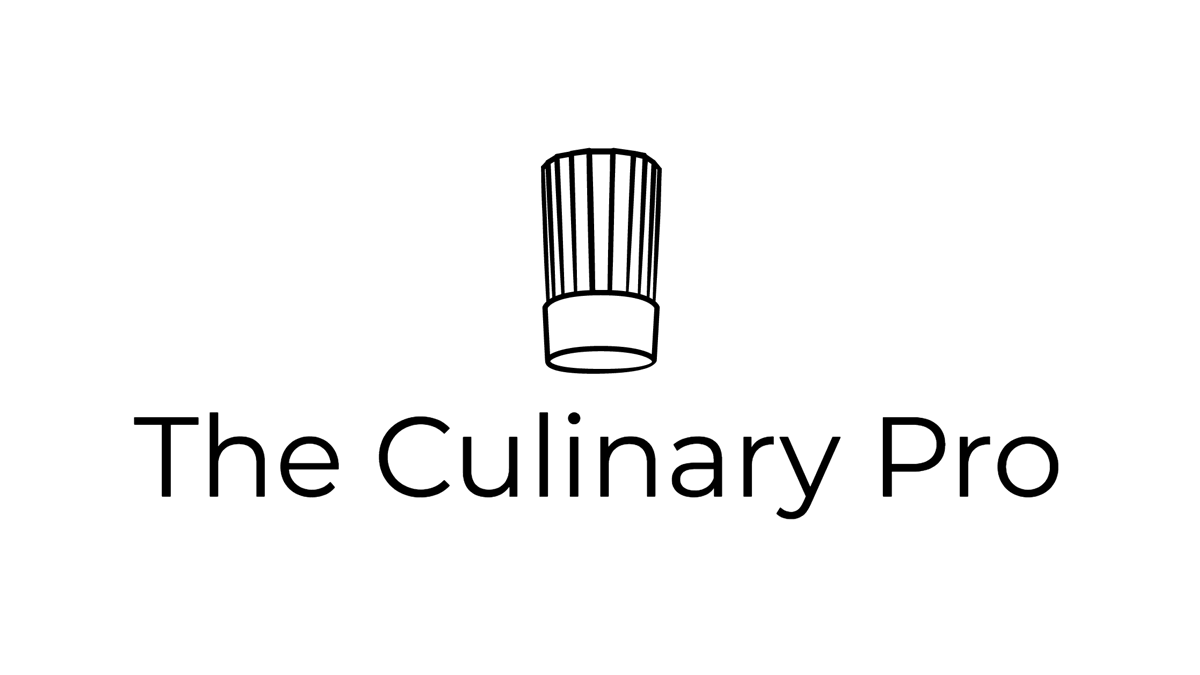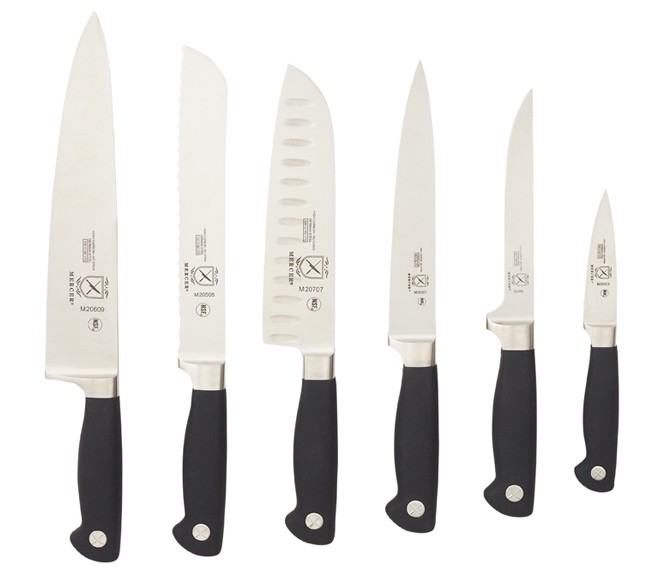About Cutlery
Knives are among a chef’s most indispensable tools in the kitchen and are made for various tasks, from paring vegetables to fish filleting and slicing a roast. The two main styles of cutlery are European designs from Germany, France, and Switzerland, which are stocky and sturdy, and Japanese designs that are sleeker and lighter. Decidedly different in grip and feel, each has its advantages. The metals used in cutlery vary in hardness and edge, and the handles are essential for proper grip and comfort during cutting. Because knives are so personal and so much in the kitchen depends on good knife skills, take the time to find a quality set of knives that works for you. Visit a cutlery store so you can feel how the knife is in your hand. A good knife will reduce physical stress on the hand and wrist, making work in the kitchen smoother and more manageable.
Types of Metals Used in Cutlery
Every manufacturer has a recipe for the metals they use,including, including high-carbon steel, chrome, molybdenum, vanadium, and tungsten carbide. High-carbon steel is made from iron and 0.5-1.5% carbon. Carbon provides hardness and helps to maintain the sharpness of the blade. The metal's hardness takes more skill to sharpen the edge, but it also means that it can be more brittle. The Rockwell Hardness Scale determines the metal's hardness with most quality knives in the 55-60 range. Japanese knives tend to be at the 60 hardness level, requiring more maintenance, while German knives are in the 55 range, requiring less maintenance.
Other additives contribute various properties to kitchen blade steel. Chromium adds hardness but allows the knife to hold an edge longer and is resistant to tarnishing and rusting. Vanadium allows a knife to retain an extra-sharp edge, while Molybdenum and Manganese contribute hardness and wear resistance.
A Few Metal Terminology Terms
440/440A/440B/440C – High carbon alloys with increased carbon content. 440A is lower quality while 440C is better quality
Damascus Steel – Not a type of metal but an ancient process of creating a wave or water pattern on the blade
Powder Steel (SG-2) - A relatively new process for Japanese cutlery which involves mixing very finely ground powders of various metals, compressing them into shape, and then heating them so they bond together. It allows for very hard metals in the range of 60-65 on the Rockwell scale
VG-10 – Traditionally used in Japanese knives has superior sharpness, VG-1 is a variant but not quite as sharp as the VG-10
What's in a Chef Knife?
Knives often are stamped with a series of letters and digits; here's how to decipher them.
X50CrMo15 - The two digits after the X indicate the percentage of Carbon in the steel (X50 means 0.50%, X75 means 0.75%, etc.). The final two digits indicate the percentage of all the other elements combined. Cr suggests the presence of Chromium, Mo indicates Molybdenum, and V indicates Vanadium.
Stamped or Forged?
Stamped Knives
Stamped knives are made from cutouts of rolled steel. The blades are machine tempered, sharpened, and finished. The steel used for stamped knives tends to be softer and lighter and the knives lack the balance of forged knives, therefore, requiring a firmer grip and more pressure when in use. Stamped knives are usually priced lower than forged cutlery.
Forged Knives
Forged knives originally were handcrafted using a process of heating metal bars, setting them in a die, and hammering them into the desired shape.
Today, modern forged knives are stamped and then forged using a hydraulic hammer press to pound the steel using a die or mold. Once shaped, the knife goes through up to 50 additional steps that require heating and tempering at temperatures up to 2200°F to create the final product. Some of these steps are done through machines, and others are done by hand. Forged knives tend to have more weight and balance, which helps when doing a lot of dicing or chopping.
Anatomy of a Knife
A knife consists of two primary components the blade and the handle. A forged knife will have a one-piece blade that includes the bolster and tang.
Bolster – A thick steel band between the blade and the handle that is useful when gripping and adds balance to the knife. German-made knives tend to have bolsters; Japanese commonly don’t
Butt – End of the knife handle
Edge - The sharpened part of the blade that extends from the heel to the tip
Handle – Handles can be riveted, cemented, or glued, ideally, resist germs and water penetration, and are constructed in ways that do not break or separate from the tang.
Heel - The heel is the rear portion of the blade and is most often used to cut through a thick or resistant product, which requires more force
Point – The pointed top of the blade
Spine - The spine is the back side of the blade opposite the edge
Tang - The tang is usually found in forged knives and extends the blade through the handle. The tang adds balance and durability
Tip - The tip is the front part of the blade that does most of the cutting and separating
Types of Edges
Cutlery is designed with various styles of edges that have subtle differences. Most Western-style knives produced in Europe and the United States have a double-edged blade that is some variation of the V-edge. Japanese knives traditionally were ground to a single-edge, or chisel edge, and produced in right-hand or left-hand variations. Today, however, Japanese cutlery routinely produces double-edge blades such as Shun or GLOBAL brands.
Double-Edge - Most Western-made knives have a double-edge
Single-Edge - Japanese knives commonly have a single edge
Straight Edge - Formed by grinding the blade in a straight line and tapering it to a razor-sharp edge, also called flat grind
V-Edge is the most common type of edge found on Western-style knives produced in Europe and the United States. The blade is ground at a 20-degree angle on both sides to produce a V-shape.
Bevel Edge, also known as a compound bevel, is a V-edge variation with a V-stacked on top of a double-edged blade.
Convex Edge is an arcing blade that slopes to a rounded edge
Hollow Ground Edge is created by grinding from just below the midpoint of the blade to form concave sides that come to a fragile cutting edge
Chisel Edge is found on Japanese cutlery and is known as a single edge because one side is straight and the other side is tapered to an edge
Granton Edge is sometimes called a hollow grind, but it is a scalloped edge that keeps food from sticking to the blade when slicing.
Serrated Edge -This single-edge blade with arcs that can cut through items with a tough outer shell or skin, including bread and tomatoes.
Choosing a Chef Knife
Hold the knife and evaluate it for comfort, balance, and weight. Do you like the shape of the handle? How does the grip feel? Is there enough clearance in the handle to prevent your knuckles from hitting the cutting board when cutting? How is the weight and balance of the knife? A certain amount of weight is good because, coupled with gravity, it will make chopping or dicing easier, so your hand, wrist, and arm will feel less fatigue. Does the knife hold an edge over prolonged use, or does it get dull quickly?
While a chef knife is probably the tool you will use the most in the kitchen, you will also need a variety of other knives for tasks beyond dicing, chopping, and mincing. Boning knives are useful for fabricating meat, poultry, and fish, while scimitars are used for portioning meats. A cleaver is useful for cutting or chopping bones. Paring knives are used for trimming and turning vegetables, and carving and slicing knives are used for roasted meats and poultry.








